Formfinding Algorithm
CALIBRATING A FORMFINDING ALGORITHM FOR SIMULATION OF TENSIONED KNITTED TEXTILE ARCHITECTURAL MODELS
FARZANEH OGHAZIAN, NATHAN BROWN and FELECIA DAVIS
The Pennsylvania State University.
This paper presents an optimization-based calibration process for tuning a digital formfinding algorithm used with knitted textile materials in architectural tension structures.
3D scanning and computational optimization are employed to accurately approximate a physical model in a digital workflow that can be used to establish model settings for future exploration within a knit geometric typology.
Several aspects of the process are investigated, including different optimization algorithms and various approaches to data extraction.
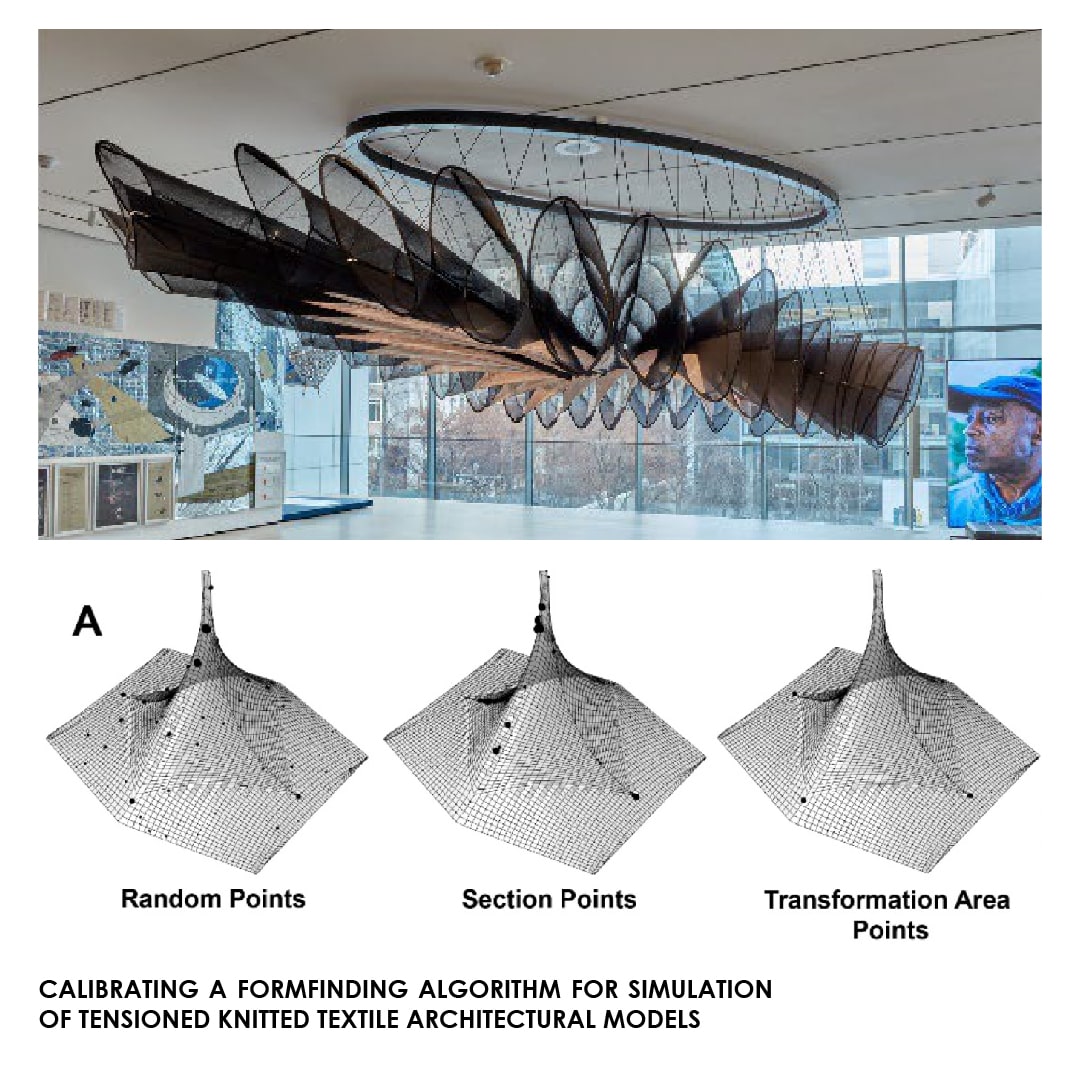 The goal is to determine the appropriate optimization method and data extraction, as well as automate the process of adjusting formfinding settings related to the length of the meshes associated with the knitted textile behavior.
The goal is to determine the appropriate optimization method and data extraction, as well as automate the process of adjusting formfinding settings related to the length of the meshes associated with the knitted textile behavior.
The calibration process comprises three steps: extract data from a 3D scanned model; determine the bounds of formfinding settings; and define optimization variables, constraints, and objectives to run the optimization process.
Knitted textiles made of natural yarns are organic materials and when used at the industrial level can satisfy DSG 9 factors to promote sustainable industrialization and foster innovation in building construction through developing sustainable architectural systems.
The main contributions of this paper are calibrated digital models of knitted materials and a comparison of the most effective algorithms and model settings, which are a starting point to apply this process to a wider range of knit geometries. These models enhance the implementation and further development of novel architectural knitted systems.
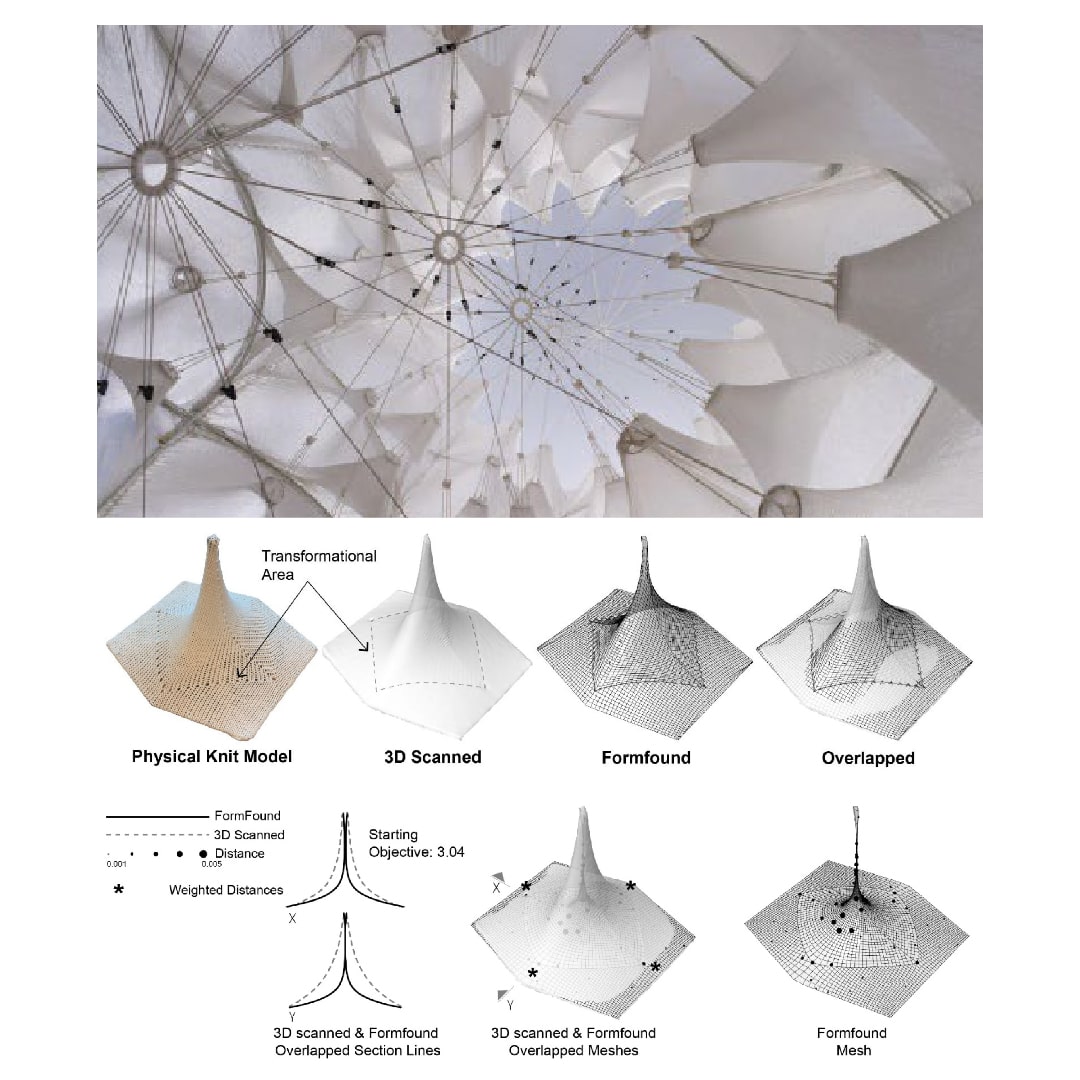 This research positions itself in the Sustainable Development Goal 9 [SDG 9] sector which aims to build resilient infrastructure, promote inclusive and sustainable industrialization and foster innovation.
This research positions itself in the Sustainable Development Goal 9 [SDG 9] sector which aims to build resilient infrastructure, promote inclusive and sustainable industrialization and foster innovation.
Knitted textiles made of organic yarns enable architects to apply these materials for making sustainable structures. Additionally, knitted textiles because of their specific structures allow for integration of different materials such as conductive yarns into their structures.
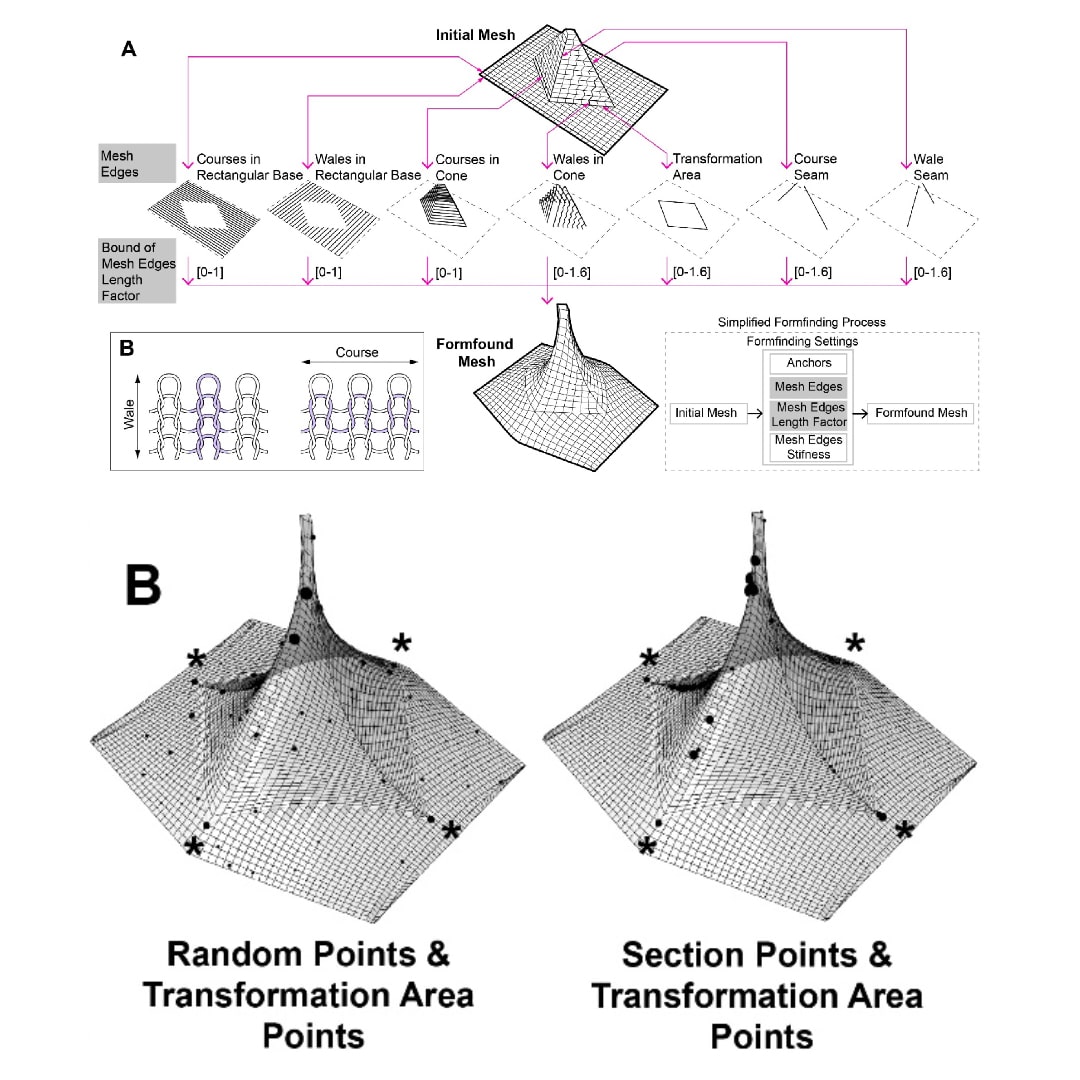 When used as architectural structures these materials can collect energy and be used as a source of electricity. Much more can be added to the list that support the need for more in-depth investigation of these materials for architectural application.
When used as architectural structures these materials can collect energy and be used as a source of electricity. Much more can be added to the list that support the need for more in-depth investigation of these materials for architectural application.
Successful design and fabrication of knitted textiles in architectures requires developing a digital model parallel to physical experiments that represents the behavior of the material accurately.
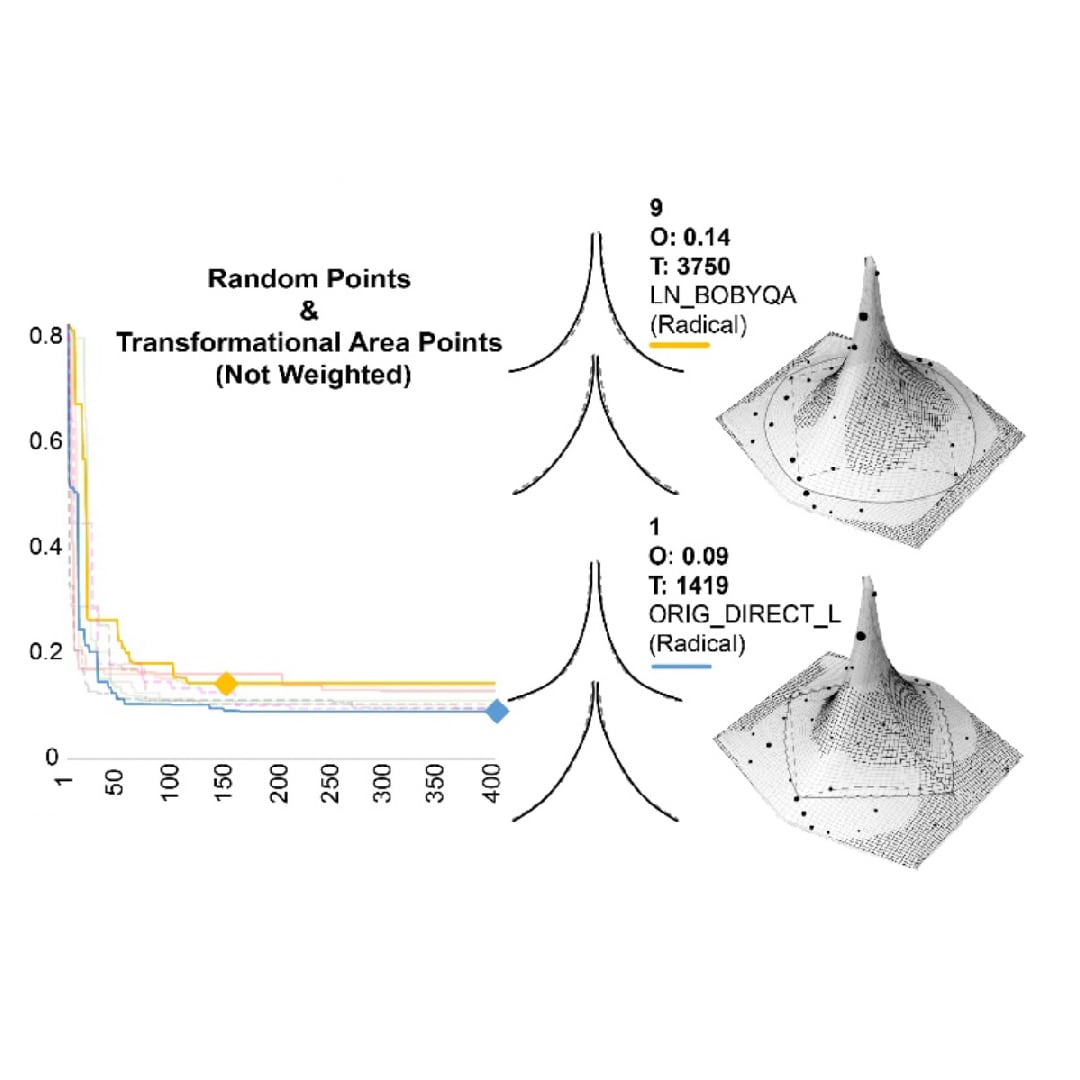 Formfinding and simulation of architectural tension structures made of real materials with complex characteristics are challenging. Although some researchers emphasize that the formfinding process is a geometrical problem and material independent, others argue that in working with specialized materials, the characteristics of the material along with the geometry inform particular behaviors.
Formfinding and simulation of architectural tension structures made of real materials with complex characteristics are challenging. Although some researchers emphasize that the formfinding process is a geometrical problem and material independent, others argue that in working with specialized materials, the characteristics of the material along with the geometry inform particular behaviors.
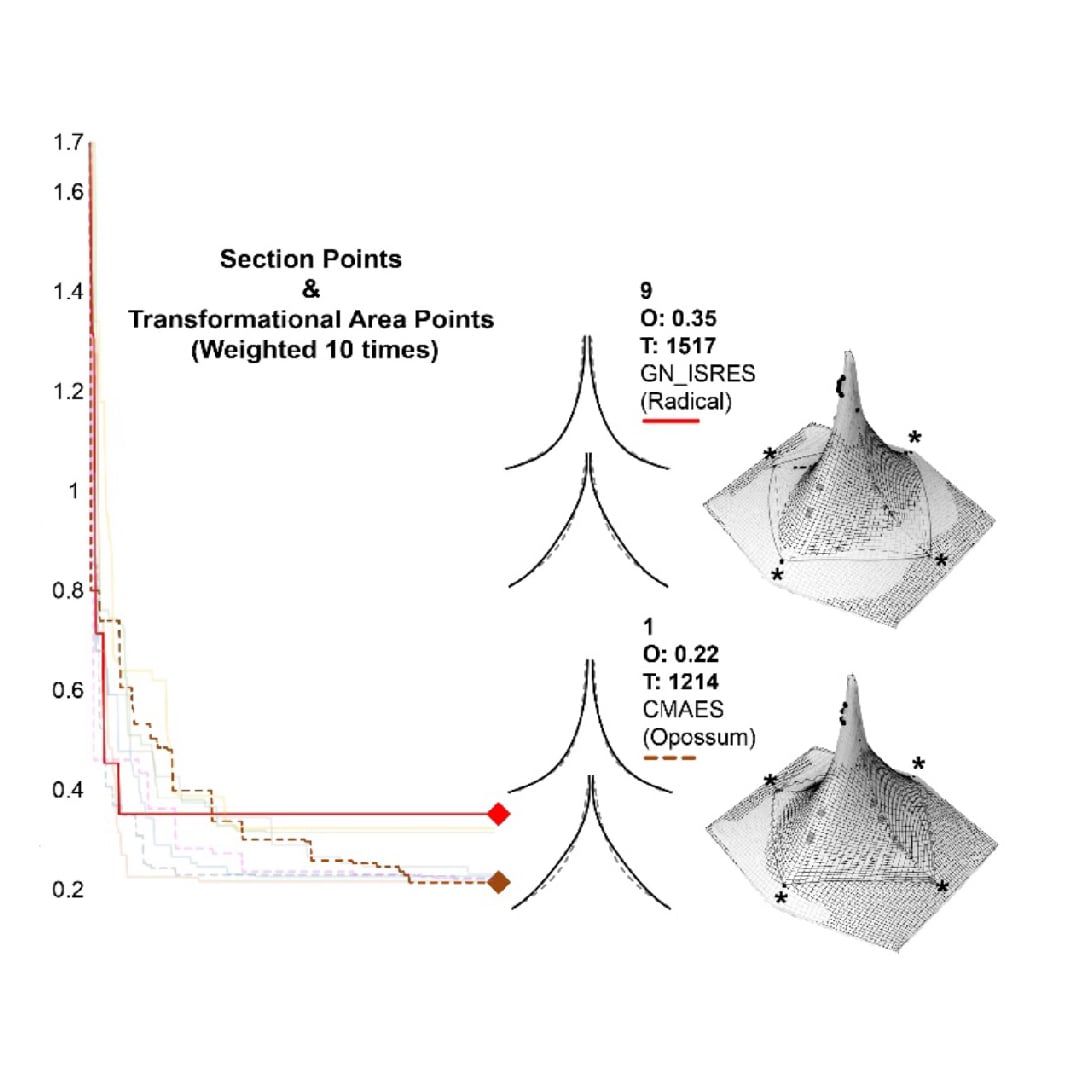 This research positions itself in the second category, where the geometry and material characteristics are both informative in formfinding process.
This research positions itself in the second category, where the geometry and material characteristics are both informative in formfinding process.
However, for materials such as knitted textiles used in architectural tension structures, working with the material properties requires an iterative learning process.
This learning process is a feedback loop that synthesizes information from physical models and manipulates digital formfinding algorithms.




























Comments